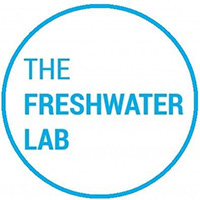The biggest drawdown of the Cambrian-Ordovician aquifer from a single community has been in the city of Joliet (the third most populous city in Illinois), where the aquifer’s water level has fallen by over 800 feet. Joliet and other southwestern suburbs of Chicago in Will, Kendall, Kane and DuPage counties are at the highest risk of aquifer collapse. In this area, sustainable withdrawals from the aquifer would fall between 2 to 7 million gallons per day (mgd), yet in 2018 total demand on the aquifer was 36.7 mgd. 12.8 mgd of this demand came from three large petrochemical users.
In March 2021, Joliet entered an agreement with the City of Chicago to switch its water supply to Lake Michigan water, treated by the Chicago Department of Water Management. Chicago agreed to begin supplying Joliet with water no later than January 1, 2030 for a duration of 100 years. Joliet will then supply the water to its customers within and beyond its municipal boundaries.
The historic agreement in which the City of Chicago pledged to supply Joliet with treated Lake Michigan water will not be sufficient to alleviate risk to the regional groundwater supply. The Illinois State Water Survey (ISWS) found that most sandstone wells in the southwestern suburbs, including Joliet, are at risk of not meeting future demand even when accounting for Joliet’s switch to Lake Michigan water. While Joliet’s switch will significantly reduce overall aquifer demand, increases in demand from other communities will counteract this decline. Accordingly, the ISWS projects that most communities in the region will be forced off the aquifer with the only uncertainty being how soon this occurs. Water conservation and changes to suburban development patterns could lessen the strain, but future demand is unpredictable, and unaccounted-for demands from new users can accelerate projected groundwater losses by decades.
Over the last twenty years, the exponential growth of the warehouse and logistics sector has dramatically changed the industrial landscape in Joliet. This is due to a hot logistics market and the steady rise of e-commerce. Global retailers, logistics providers and product distributors such as Amazon, Walmart, IKEA, Home Depot, Mars and Whirlpool are just a few of the major tenants in warehouses and distribution centers across Joliet’s twenty-one industrial parks which constitute nearly one-third of the city. Journalist Alexander Sammon has described the sprawl of these boxed facilities as an enormous, horizontal equivalent game of Tetris. Since 2010, the workforce in transportation, warehousing, and utilities has grown 3%. The transportation, warehousing and utilities sector is ranked as the third-largest employer and employed 11.2% of Joliet population in 2021.


